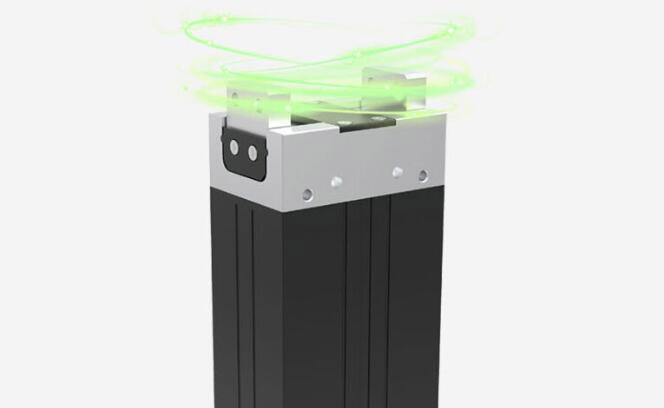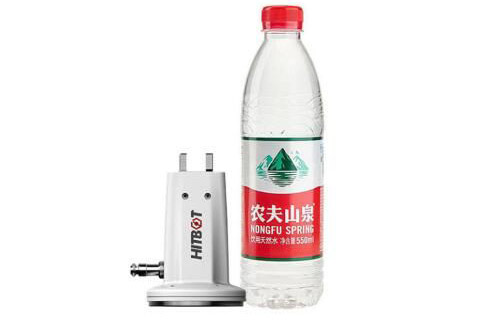The sales of servo motors servo drives, and precision gearboxes used in industrial robots equaled more than a third (35%) of the global industrial robot market in 2022, according to the latest research from Interact Analysis.
The sales of servo motors servo drives, and precision gearboxes used in industrial robots equaled more than a third (35%) of the global industrial robot market in 2022, according to the latest research from Interact Analysis. Based on five years of research into the global industrial robot market, our Components in Industrial Robots market report will be released in June 2023. In this insight, we compare the revenue of each component used in industrial robots with the total sales of industrial robots. Trends associated with combined actuators will also be explored. Robot Arm Coffee Machine

Our research shows that the market of servo motors, servo drives, and precision gearboxes used in industrial robots equalled 35% of the total sales of industrial robots in 2022, of which the share of gearboxes is the highest, reaching 14%, with the sales of servo motors and drives being equivalent to 11% and 10% of the industrial robots market respectively. In addition, as the “brain” that is necessary for each industrial robot, revenue from robot controllers worthed 8% of industrial robot sales. In contrast, sales of teach pendants, which can be “shared” among multiple robots by connecting and disconnecting with different robot controllers, was only equal to 4% of the industrial robot market in 2022. The revenue from “extra encoders” was as large as 1% of industrial robots’ sales in 2022, and this refers to the dual encoder configuration mainly found in collaborative robots and some SCARA robots to achieve higher precision. Overview of components’ sales in the total sales of industrial robots. Globally, the sales of the above key components equalled 48% of industrial robots sales in 2022, with the remaining 52% covering costs for robot housing, harnesses, other expenses such as R&D and sales, and robot vendors’ margins.
Articulated robots accounted for more than 60% of global industrial robot production in 2022 and precision gearboxes used in this robot type equalled 16% of the robots’ revenue, much higher than the share of 6%-8% in other robot types. This is primarily because articulated robots can have very high payloads, for which the gearboxes used are expensive. For example, for articulated robots with a payload of less than 10kg, gearboxes worthed only 9% of the robots’ sales in 2022. For articulated robots with payloads of 10-80kg, however, three to six expensive cycloidal gearboxes are usually employed and, furthermore, the strain-wave gears used are also larger in size and have a higher average price. As a result, the revenue share of precision gearboxes used in large articulated robots equalled 20% of these robots’ sales. Force/torque sensors are almost exclusively employed in articulated industrial and collaborative robots, installed at the end of the robot arm. In 2022, sales of force/torque sensors as components in articulated robots totalled only 2% of revenue for this robot type, but in collaborative robots the respective share was 13%. This was because the usage of force/torque sensors in articulated robots was significantly lower than in collaborative robots, although their overall payload and price are higher in articulated robots. The penetration rate and average price of machine vision hardware are not related to payloads, but dependent instead on robot types and applications. Overall, revenue of machine vision components used with delta and SCARA robots equalled the highest share of the robots’ sales in 2022, because these two types of robots are often employed for pick and place applications, where the use of machine vision technology is commonplace.
Within the collaborative robot components market, the combined actuator market is growing rapidly. As a highly integrated product, combined actuators can include all key components that constitute a collaborative robot joint, such as a frameless motor, a strain-wave gearbox, dual encoders, brake, and sometimes also a servo drive and a joint torque sensor. Combined actuators are compact in nature, meeting demand for lightweight design of collaborative robots. In addition, components for an actuator are well matched with each other, so they work well in combination and can achieve good performance. For robot OEMs, such integrated products can be directly used as collaborative robot joints. This saves significant resource in components selection and development of robot joints, allowing robot vendors to focus on application-oriented R&D. There are two important factors driving market growth for combined actuators. The first is the growing customer base consisting of emerging collaborative robot companies. These companies prefer actuators, because the integrated solution significantly reduces market entry barriers and their R&D time and costs. In contrast, leading collaborative robot OEMs have advanced know-how in robot joints and so generally buy separate components and manufacture actuators in-house. Overall, the potential for combined actuators to be sold to leading collaborative robot vendors or the highly consolidated industrial robot market is limited. The second driver is price decrease. The average price of combined actuators has dropped substantially in recent years. In China, some manufacturers have launched products with a price as low as $500, which is lower than the cost of purchasing each component separately. As the collaborative robot market scales up, with new entrants emerging, we expect the scale effect and competition to continue to drive down the cost and selling price of combined actuators. However, the collaborative robot market is accelerating towards consolidation. Besides trying to sell to the collaborative robot start-ups, suppliers of combined actuators will also need to emphasize their products’ performance premium compared with pulling together separate components. These features might include compactness, reduced vibration, etc, in order to make combined actuators more attractive to mature markets. Our Components in Industrial Robots report, to be released in June 2023, will include market size data (sales, shipment units, average selling price) for the above key components by robot type, payload range, and major regions. The combined actuator market will also be discussed. Please look out for our upcoming releases.
As a research analyst with Interact Analysis based in China, Samantha Mou provides support in the Industrial Automation sector. Samantha brings with her a master’s degree in Economics, and has experience, whilst working in Germany, conducting market research in Industrial Equipment and Automobile Components.
Check out our free e-newsletters to read more great articles..

20kg Robotic Arm ©2023 Automation.com, a subsidiary of ISA